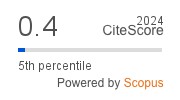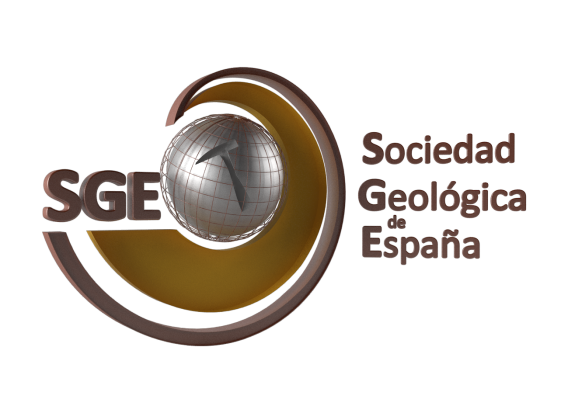The tectonic and climatic record of a synrift lacustrine series: The Villanueva de Huerva Formation (Lower Cretaceous, Aguilón subbasin)
DOI:
https://doi.org/10.55407/geogaceta100876Keywords:
lake, dolomite, deepening-shallowing cycles, slump structures, orbital forcingAbstract
The Villanueva de Huerva Formation in the Aguilón sub-basin (NE Spain) is a Valanginian-lower Hauterivian synrift unit that includes a cyclical interval with 88 lacustrine deepening-shallowing sequences controlled by the orbital precession cycle. The main component in the carbonate facies is dolomite. Textural features suggest a primary origin probably induced by microbial action in a brackish lacustrine system under arid conditions. There are numerous slump levels, and other soft sediment deformation structures, that are located preferentially in the thickest sedimentary cycles and have been related to the unstabilization of basin sediments, due to tilting in the rollover anticline linked to the discontinuous movement of the main fault.
References
Allmendinger, R.W., Cardozo, N.C. y Fisher, D. (2013). Structural Geology Algorithms: Vectors & Tensors. Cambridge Univ. Press, UK, 289 p.
Artoni, A., Rizzini, F., Roveri, M., Gennari, R., Manzi, V., Papani, G. y Bernini, M. (2007). En: Thrust belts and foreland basins-from fold kine-matics to hydrocarbon systems. Fron-tiers in Earth Sciences (O. Lacombe, J. Lavé, F. Roure y J. Vergés, Eds). Springer, Berlin, 431-456. https://doi.org/10.1007/978-3-540-69426-7_23
Cortés, A.L., Liesa, C.L., Soria, A.R. y Meléndez, A. (1999). Geodinamica Acta 12, 113-132. https://doi.org/ffq5v7 https://doi.org/10.1080/09853111.1999.11105335
De Wet, C.B., Yocum, D.A. y. Mora, C. (1998). En: Relative Role of Eustacy, Climate, and Tectonism in Continental Rocks (G. Kocurek, Ed.). SEPM Special Publ. 59, 191-209. https://doi.org/10.2110/pec.98.59.0191
Hillier, S. (2000). Clay Minerals 35, 291-302. Ipas, J., Aurell, M., Bádenas, B., Canudo, J.I., Liesa, C., Mas, J.R. y Soria, A.R. (2006). Geogaceta 41, 111-114. https://doi.org/10.1180/000985500546666
Martín, J.D. (2006). Macla 4/5, 35- 44. https://doi.org/10.3102/0013189X035005044
Martín-Chivelet, J. y 46 autores más (2019). En: The geology of Iberia: a geodynamic approach (C. Quesada y J.T. Oliveira, Eds.), Regional Geology Reviews. Springer, Cham., p. 169-249.
Pina, C.M., Pimentel, C. y Crespo, A. (2020). Chemical Geology 547, 119667. https://doi.org/10.1016/j.chemgeo.2020.119667
Schudack, U. y Schudack, M. (2009). Journal Iberian Geology 35, 141-168.
Schwarzacher, W. (2005). Sedimentary Geology 181, 93-106. https://doi.org/10.1016/j.sedgeo.2005.07.001
Soria, A.R. (1997). La sedimentación en las cuencas marginales del surco Ibérico durante el Cretácico Inferior y su control tectónico. Tesis Doctoral, Univ. de Zaragoza, 363 p.
Soria, A.R., Martín-Closas, C., Melén-dez, A., Meléndez, M.N. y Aurell, M. (1995). Estudios Geológicos 51, 141-152. https://doi.org/10.3989/egeol.95513-4292
Soria, A.R., Meléndez, A., Aurell, M., Liesa, C.L., Meléndez, M.N. y Gómez-Fernández, J.C. (2000). En: Lake basins through space and time (E.H. Gierlowski-Kordesch y K.R. Kelts, Eds.). AAPG Studies in Geology 46, 257-262.
Soria, A.R., Muñoz, A., Liesa, C.L., Luzón, A., Meléndez, A. y Meléndez, N. (2012). Terra Nova 24, 407-416. https://doi.org/10.1111/j.1365-3121.2012.01080.x
Supko, P.R., Stoffers, P. y Coplen, T.B. (1974). En: Initial Reports of the Deep Sea Drilling Project (R.B. Whitmars, O.E. Weser y D.A. Ross, Eds.). U.S. Government Printing Office, Washington, 23, 867-878
Downloads
Published
How to Cite
Issue
Section
License
Copyright (c) 2024 Ana R. Soria, Aránzazu Luzón, María J. Mayayo, Carlos L. Liesa

This work is licensed under a Creative Commons Attribution-NonCommercial-ShareAlike 4.0 International License.
Until the year 2023 the author assigned the copyright to the Sociedad Geológica de España, but from 2024 the author retains the copyright and grants the Sociedad Geológica de España the right of first publication and non-exclusive distribution of each article in all current or future media, while transferring, also non-exclusively, the commercial rights for the distribution of the printed version of Geogaceta. On the other hand, the articles, from the year 2023, are available simultaneously with their publication, under the Creative Commons CC BY-NC-SA 4.0 license, which allows copying, transforming the work, but if any transformation is distributed, the new work must be distributed under the same license, and never for commercial purposes, while acknowledging the authorship and original publication in GEOGACETA, so that the only role of copyright is to give authors control over the integrity of their works and the right to be properly acknowledged and cited.









